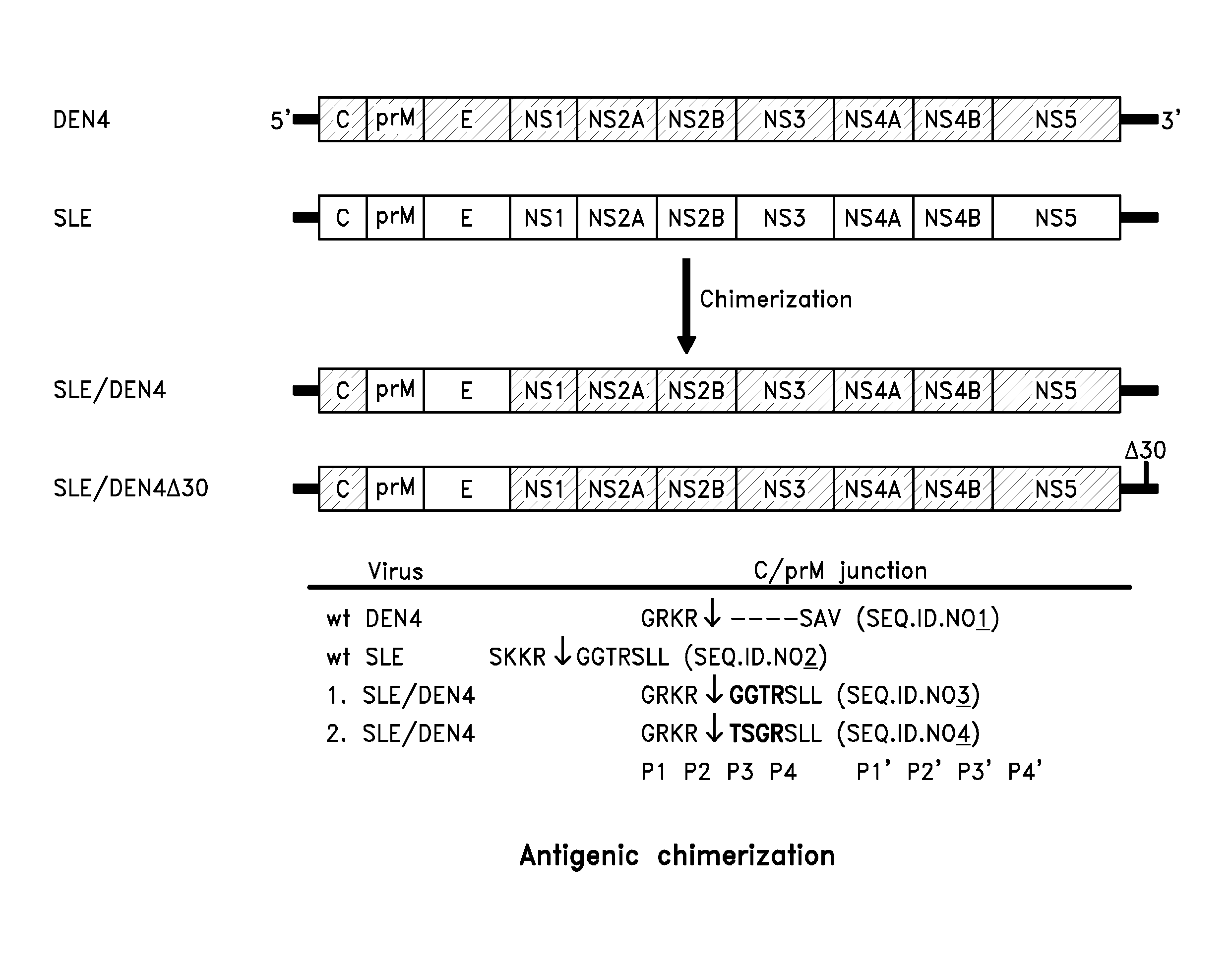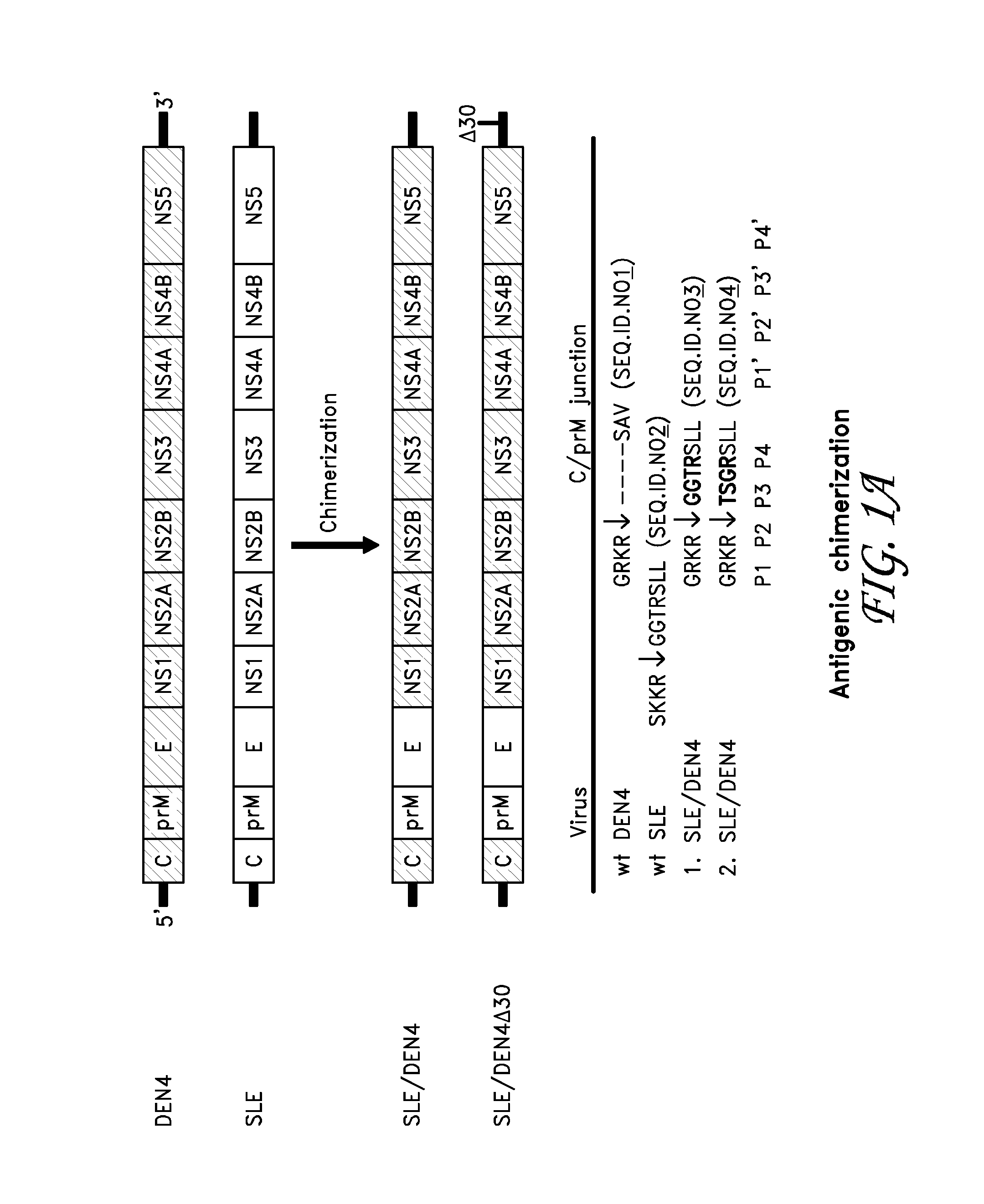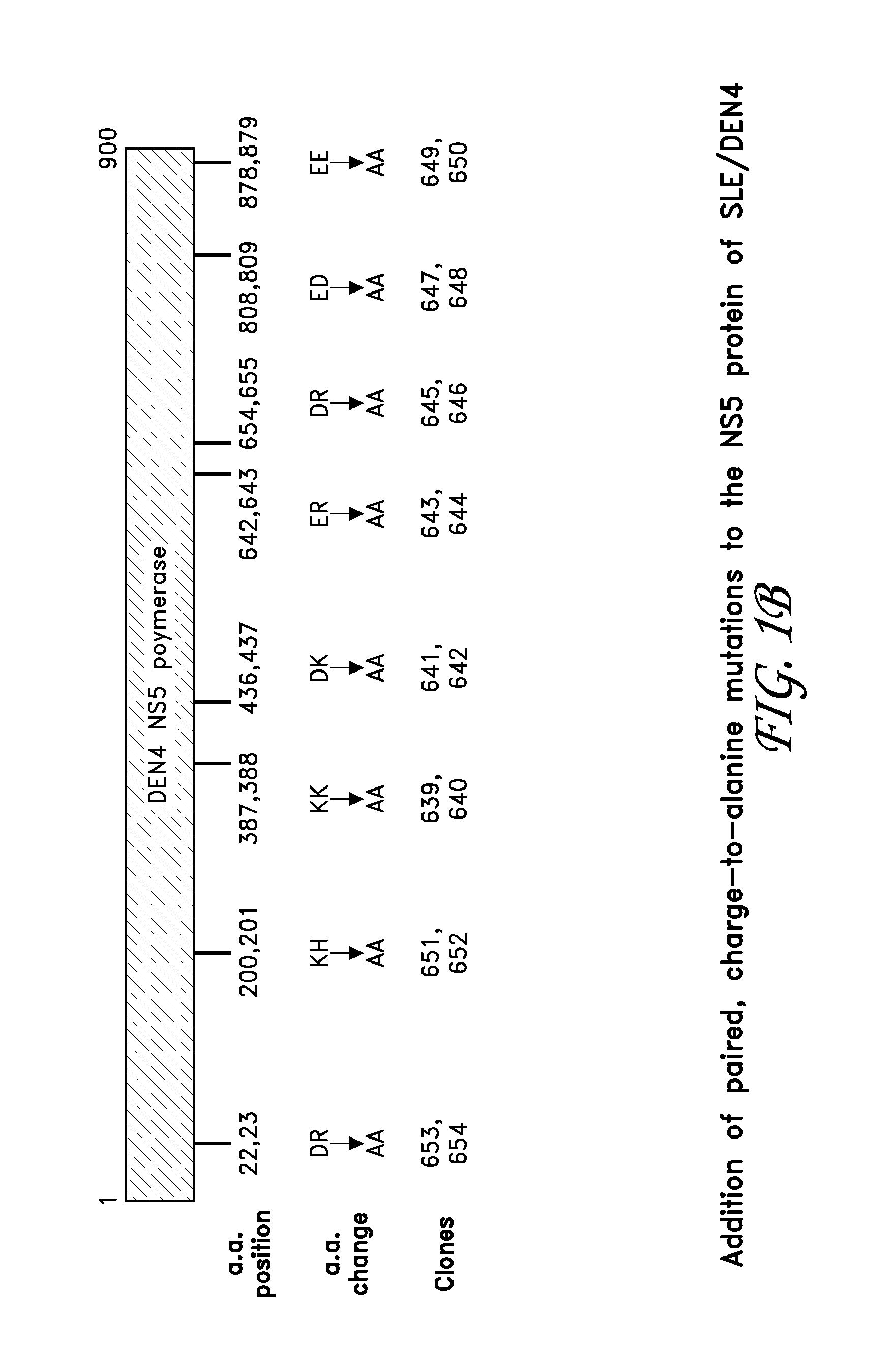Chimeric sle/dengue type 4 antigenic viruses
a chimeric virus and antigen technology, applied in the field of attenuated, st louis encephalitis virus/dengue virus type 4 antigen chimeric viruses, to achieve the effects of reducing neurovirulence, neuroinvasiveness, and neurovirulence reduction
- Summary
- Abstract
- Description
- Claims
- Application Information
AI Technical Summary
Benefits of technology
Problems solved by technology
Method used
Image
Examples
example 1
EXAMPLE 1
[0073]Some of the materials and methods used in the experiments that follow are provided in this example.
[0074]Cells and Viruses
[0075]Vero cells (African green monkey kidney) were maintained in OptiPro SFM (Invitrogen, Grand Island, N.Y.) supplemented with 4 mM L-glutamine (Invitrogen). SH-SY5Y cells (human neuroblastoma) were maintained in D-MEM / F-12 (Invitrogen) supplemented with 10% fetal bovine serum (FBS), 1 mM L-glutamine, and 0.05 mg / ml gentamicin (Invitrogen). C6 / 36 cells (Aedes albopictus mosquito cells) were maintained at 32° C. in Minimal Essential Medium containing Earle's salts and 25 mM HEPES buffer (Invitrogen) and supplemented with 10% FBS, 2 mM L-glutamine, and 0.1 mM non-essential amino acids (Invitrogen).
[0076]A mouse-brain-derived suspension of the SLE Hubbard strain was obtained from the World Reference Center for Emerging Viruses and Arboviruses at the University of Texas Medical Branch, Galveston, Tex. The SLE Hubbard strain was originally isolated f...
example 2
EXAMPLE 2
[0089]This example describes the recovery and sequence analysis of SLE / DEN4 and SLE / DEN4Δ30 viruses. Molecular cloning techniques were used to replace the prM / E region of the rDEN4 and rDEN4Δ30 viruses with the corresponding region of SLE to generate two viruses, SLE / DEN4 and SLE / DEN4Δ30, respectively (FIG. 1A). Previous attempts to generate DEN4 antigenic chimeric viruses with tick-borne encephalitis virus (TBE), Langat, (LGT), and WN indicated that the sequence of the C / prM cleavage junction was important for viability [8, 15, 16]. Therefore, viruses with two different C / prM junctions were generated; GGTR and TSGR which represent amino acids in the P1′-P4′ position of the C / prM cleavage site (FIG. 1A). Cleavage at this site is mediated by the viral NS2B / NS3 protease. The cDNA plasmid clone for each recombinant chimeric construct was designed to include one of two Vero cell adaptation mutations in the DEN4 NS4B gene (Thr105→Ile or Leu112→Phe) that were previously associat...
example 3
EXAMPLE 3
[0092]This example describes experiments that were conducted to evaluate the neuroinvasiveness and neurovirulence of SLE / DEN4 and SLE / DEN4Δ30 viruses in mice. First, the two parental SLE preparations, namely, uncloned SLE, which has only one passage in Vero cells, and biologically-cloned SLE were compared in suckling SW mice for neurovirulence following IC inoculation and in adult SW mice for neuroinvasiveness following IP inoculation. In side-by-side comparison of the LD50, both uncloned and cloned SLE was (1) highly virulent for 3-day-old mice with an IC LD50 of 0.2 or 0.7 PFU, respectively, and (2) extremely neuroinvasive for 3-week-old SW mice with an IP LD50 of 32 or 5.6 PFU, respectively. These findings indicate that the differences in the sequences between these two preparations did not affect the highly virulent phenotype of SLE, and biologically-cloned SLE can be used as a reference parental virus for comparative study of neurovirulence and neuroinvasiveness of th...
PUM
| Property | Measurement | Unit |
|---|---|---|
| core body temperature | aaaaa | aaaaa |
| volume | aaaaa | aaaaa |
| temperature | aaaaa | aaaaa |
Abstract
Description
Claims
Application Information
 Login to View More
Login to View More - R&D
- Intellectual Property
- Life Sciences
- Materials
- Tech Scout
- Unparalleled Data Quality
- Higher Quality Content
- 60% Fewer Hallucinations
Browse by: Latest US Patents, China's latest patents, Technical Efficacy Thesaurus, Application Domain, Technology Topic, Popular Technical Reports.
© 2025 PatSnap. All rights reserved.Legal|Privacy policy|Modern Slavery Act Transparency Statement|Sitemap|About US| Contact US: help@patsnap.com



